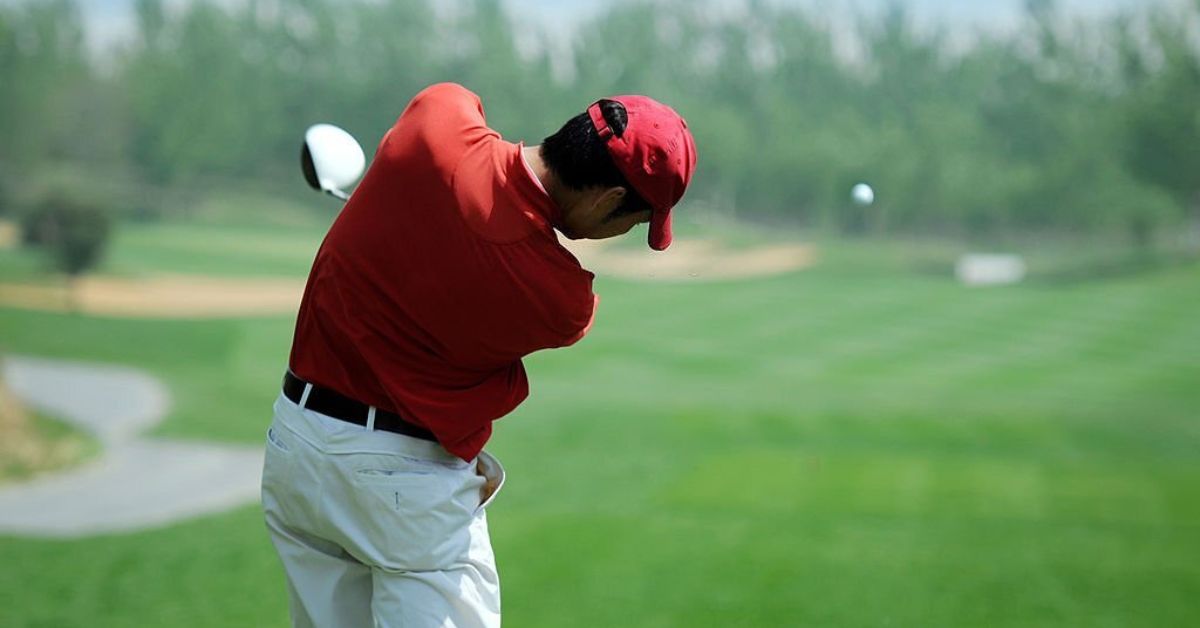The driver is the longest club in the bag. Designed to progress the ball as far as possible from the tee box, the big stick is capable of big speed.
But, how fast does a golf ball come off a driver?
In this article, you’ll learn everything about driver ball speed.
Specifically, you’ll discover how clubhead speed correlates with ball speed, along with expert tips to maximize ball speed with some simple swing changes.
Ready to improve your game? Read on!
How Fast Does a Golf Ball Come Off a Driver?
The average golf ball speed for amateur golfers is around 130 mph when hitting driver, while the average on the professional tour is around 180 mph. Ball speed is important for generating distance off the tee – a 1 mph increase in ball speed adds approximately 2 yards in distance.

How Does Ball Speed Relate to Swing Speed?
Swing speed — also known as club speed or clubhead speed — refers to how fast the clubhead is traveling at the point of impact with the golf ball.
Similarly, ball speed is the rate at which the ball is traveling after impact.
Ball speed is closely tied to swing speed. If you swing with more velocity and move the clubhead faster at impact, the ball will travel faster.
However, it’s not just about the power of the clubhead, but also about the way in which this power is transferred to the ball through impact.
In other words, if you strike the ball with the center of the clubface, almost all the power of the clubhead speed will transfer directly into ball speed.
Conversely, if you strike the ball with the toe or heel of the clubface, the power transfer will be inefficient and the ball speed will be lower.

How Fast Does the Average Person Swing a Driver?
The average male golfer has a handicap of 14 or 15 and will tend to shoot in the high nineties for an average round of golf.
Simulator brand Trackman recently shared data for the average male golfer:
| Club Speed (mph) | 93.4 |
| Ball Speed (mph) | 132.6 |
| Launch Angle (deg) | 12.6 |
| Spin Rate (rpm) | 3275 |
| Carry (yds) | 204 |
| Landing Angle (deg) | 34.8 |
| Total (yds) | 226 |
In the table above, we can see that the average club speed is 93.4 mph, and the average ball speed is 132.6 mph.

What Is the Fastest Golf Ball Ever Hit?
The current golf ball speed record is held by long drive champion Kyle Berkshire, who achieved a 233.4 mph ball speed in December 2021.
Berkshire won the World Long Drive Championship in 2019 and 2021.
Check out the video below for some crazy ball speed!
How to Increase Ball Speed With Driver
As mentioned previously, ball speed is closely linked to clubhead speed.
So, to increase ball speed you have to focus on increasing your clubhead speed. This will enable you to hit the ball further off the tee.
There are 5 steps to optimize how fast the golf ball comes off the driver:
- Take a wide stance
- Coil in the backswing
- Unwind in the downswing
- Strike up against the ball
- Accelerate the follow-through
Firstly, let’s start by thinking about how we address the ball in the driver setup.
1. Take a Wide Stance
One of the most vital elements of a successful driver swing is to have a stable base, enabling you to rotate for maximum power.
In the driver setup, stand with your feet wider than shoulder-width apart.
This strong foundation allows for more rotation in the backswing, generating more power. It also helps you stay balanced in the swing, and in full control of the club.
2. Coil in the Backswing
Secondly, think about the backswing in terms of a coil.
Your upper body should turn — or coil — against the resistance provided by your lower body, where your feet are planted.
PRO TIP: Coil is the difference in the angle between your upper and lower body at the top of your backswing.
Often, pros do this well and amateurs struggle.
To achieve this, turn your shoulders as far as they will go in the backswing – your back should face the target.
At the same time, rotate your hips slightly but maintain resistance. This will maximize the power generated in the backswing.
3. Unwind in the Downswing
Having coiled in the backswing, it’s time to unleash the power in the downswing.
To start the downswing, rotate your hips toward the target. This should pull the torso, shoulders, and arms through as the coil unwinds.
In the downswing, make sure to shift your weight from your right foot to your left for optimal power. This also prevents the clubhead from bottoming out too far behind the golf ball, which can cause you to strike it low on the face.
4. Strike Up Against the Ball
Finally, we’re onto the actual ball strike.
The ball position should be in line with the inside of your left heel. This is important, as it ensures you strike up against the ball for the best launch angle.
In addition, your upper body should also be tilted back slightly. This further exaggerates the upwards striking motion.
Focus on keeping the clubface square at impact, without adding any vertical or horizontal spin to the ball, to maximize ball speed.
5. Accelerate the Follow-Through
Finally, it’s vital to have a strong follow-through.
Extend your arms fully and accelerate the follow-through, to ensure you don’t lose any clubhead speed at impact.
After impact, your chest should face the target square-on. This shows that the full rotation has occurred, with optimal clubhead speed.
Check out the video below by Rick Shiels, which demonstrates these tips to help you hit the ball further off the tee:
Conclusion
So to recap, how fast does a golf ball travel?
In summary, the average ball speed is around 130 mph, while the average on tour is about 180 mph. The record ball speed is 233.4 mph, held by Kyle Berkshire.
If you’re looking to increase your ball speed to generate more distance, work on these 5 steps in the driver swing:
- Take a wide stance
- Coil in the backswing
- Unwind in the downswing
- Strike up against the ball
- Accelerate the follow-through
By mastering these elements of the swing, while focusing on making an efficient strike, you should be able to add more distance to your tee shots.


